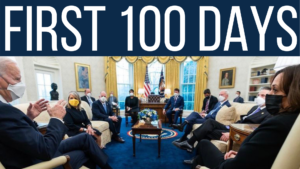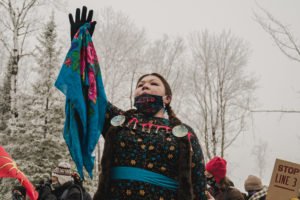Here’s a dirty little secret. Many women dye their hair. Many men wish they could. Wait, you already know that. But do you know why? Our industry (and society) doesn’t value people over age 50.
Ageism is rampant in the marketing/advertising/PR agency world. I’ve seen it countless times in global firms where older people are pushed out for bright, young faces. Leaders who are at the top of their game, stay current, instill confidence in clients and teams and yet are shown to door.
Why? Because we don’t like gray hair and what it stands for.
Talk about superficial and short-sighted.
What happens when 50-something leaders get pushed out? The company and its clients lose. They lose knowledge, business acumen, and perspective. And more than ever, we need perspective right now.
Let’s look at some common assumptions:
1) People over 50 can’t compete with the 20-something go-getters.
And yet, they can learn from each other. It’s that experience that sets us apart that is truly valuable! While a 20-something may understand technology they most likely don’t have a sense of how to tackle a challenging client, keep the business, reorg a team in a way that is a win-win for both the client and the agency, and develop the best strategy.
The truth is, older workers are more loyal, more stable and can be more inspiring. Think about a mentor. Do you want a 20-something to be your mentor about business? Chances are that you want a leader who is strategic, who you can learn from, someone who’s been in the trenches, seen a lot and can help you navigate the land mines in the battlefield.
I’ve been fortunate to mentor many talented, young professionals. Yet, one of the coolest experiences I’ve enjoyed was a “reverse mentorship” when a 20-something taught me technology and helped me with social media when it was just taking off. That opportunity solidified in my mind that it shouldn’t be an either or, it should be a balance. Recently, Warren Buffet highlighted and endorsed the idea of reverse mentorship.
We need a strong mix of ages in the workplace.
Millennials need senior leaders and senior leaders need Millennials. It’s Yin and Yang. Playing to people’s strengths leads to success.
2) 50-somethings and 20-somethings have nothing in common.
False. They actually have a lot in common, but let’s address two very important commonalities – desire for purpose and feeling undervalued.
Social Purpose is what a new generation wants. Yet it’s also what many senior leaders want once they’ve climbed the corporate ladder. Many leaders put high value in volunteering with causes dear to their heart and often go to work for those causes after leaving the agency or corporate world. That commonality is something that can bond bright minds together to make the world a better place.
Millennials often feel undervalued and underappreciated as senior leaders do. That’s a commonality we can use to everyone’s advantage. When you can see and share someone else’s viewpoint, you’re more able to bridge that divide.
If we shift our mindset, we can do more.
All perspectives are valuable in finding solutions to big problems.
3) Cost-cutting has to start with top salaries which usually means top performers, many of which can be professionals over age 50.
Recently, Mark Read, CEO of WPP, got in trouble for his comments about age when he touted the fact that the average age in the agency’s network was under age 30. The result: a huge backlash. While ageism has been around for a long time in agencies, the result of the cutting can be summed up in this analogy on quality:
Take a designer dress that’s made of high-quality material, beautiful craftsmanship and, hopefully, tailored to you. You can cut costs by dropping the designer name, using cheaper fabric and shoddy workmanship but will people really want to buy it if it falls apart? You should be willing to pay for quality work.
Cheap Isn’t Quality and Quality Isn’t Cheap.
Eliminating your best performers and senior leadership will kill the best agencies. Instead, reexamine your definition of quality, look at performance, and look past age.
4) Over 50 means lack of flexibility and higher health risks.
According to an AARP Public Policy Institute analysis of Bureau of Labor Statistics data, the average time it takes someone age 55-64 to find a new job is 20.9 weeks versus 17.5 for those under age 55. And that was before COVID. They may not say so, but many companies don’t want to hire someone over the age of 50. Their hiring managers and their hiring algorithms weed out the over 50 candidates, assuming that their salaries will be too high, they won’t want to relocate, they are at higher health risk, etc. Again, their loss.
You want a good leader? Look for experience and some gray hair. It often means you will find a professional whose experience has delivered strategy, impact, quality, leadership and mentorship – everything your organization probably needs.
It’s time for our industry to rebrand aging. It’s what we do. Let’s do it for the talent we need – all the great 50+ year-olds who’ve paid their dues, have honed keen business skills and have the perspective needed to lead a new generation to greatness.
If you are tired of ageism and the traditional agency world, give us a call. We’re putting together a team you will love, filled with top talent ready to change the world by tackling some of today’s most urgent issues – food security, social justice, climate change, plastic waste and more.
Written by Susan Peters, SVP of Food and Wellness at Effect



